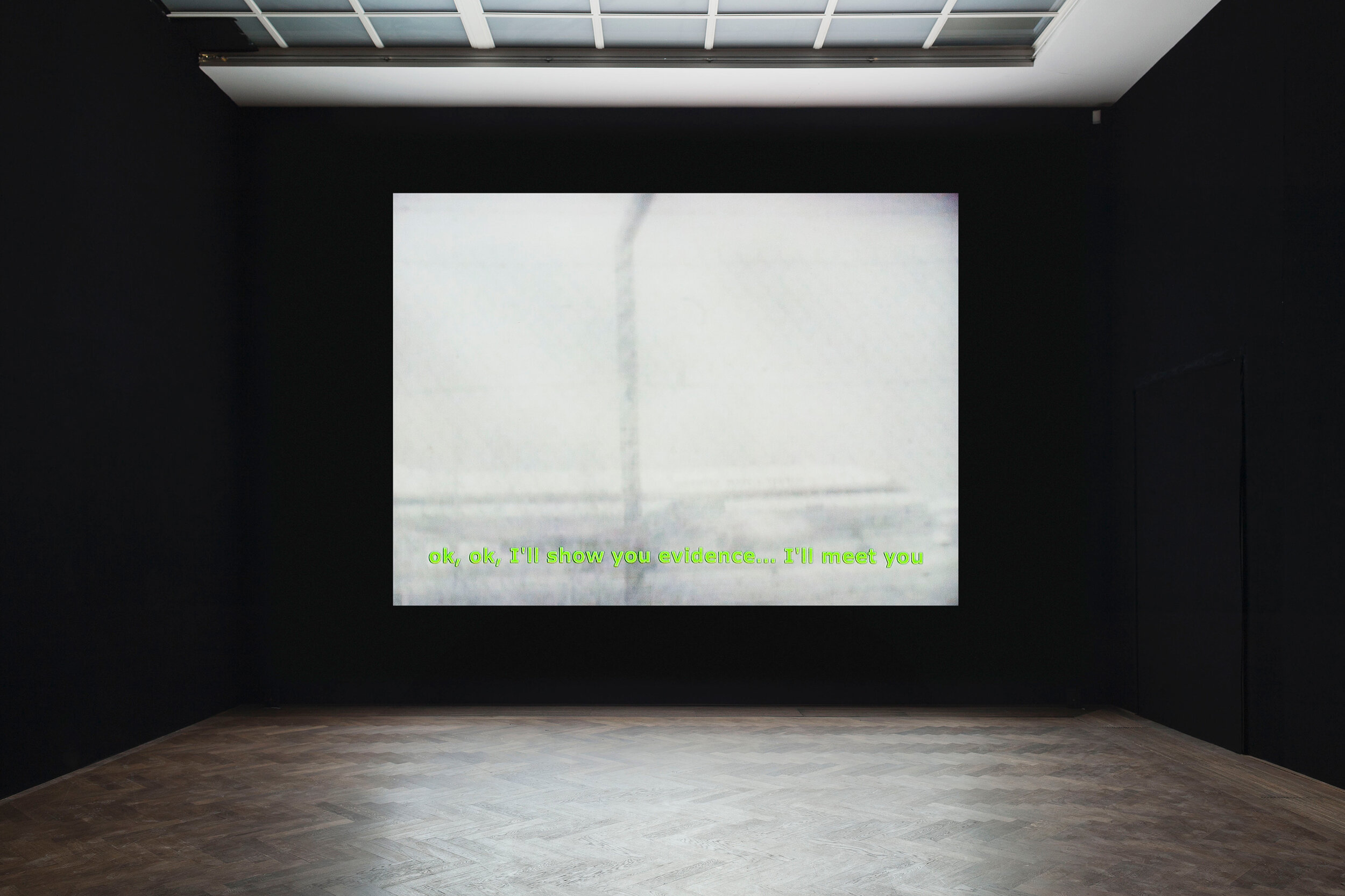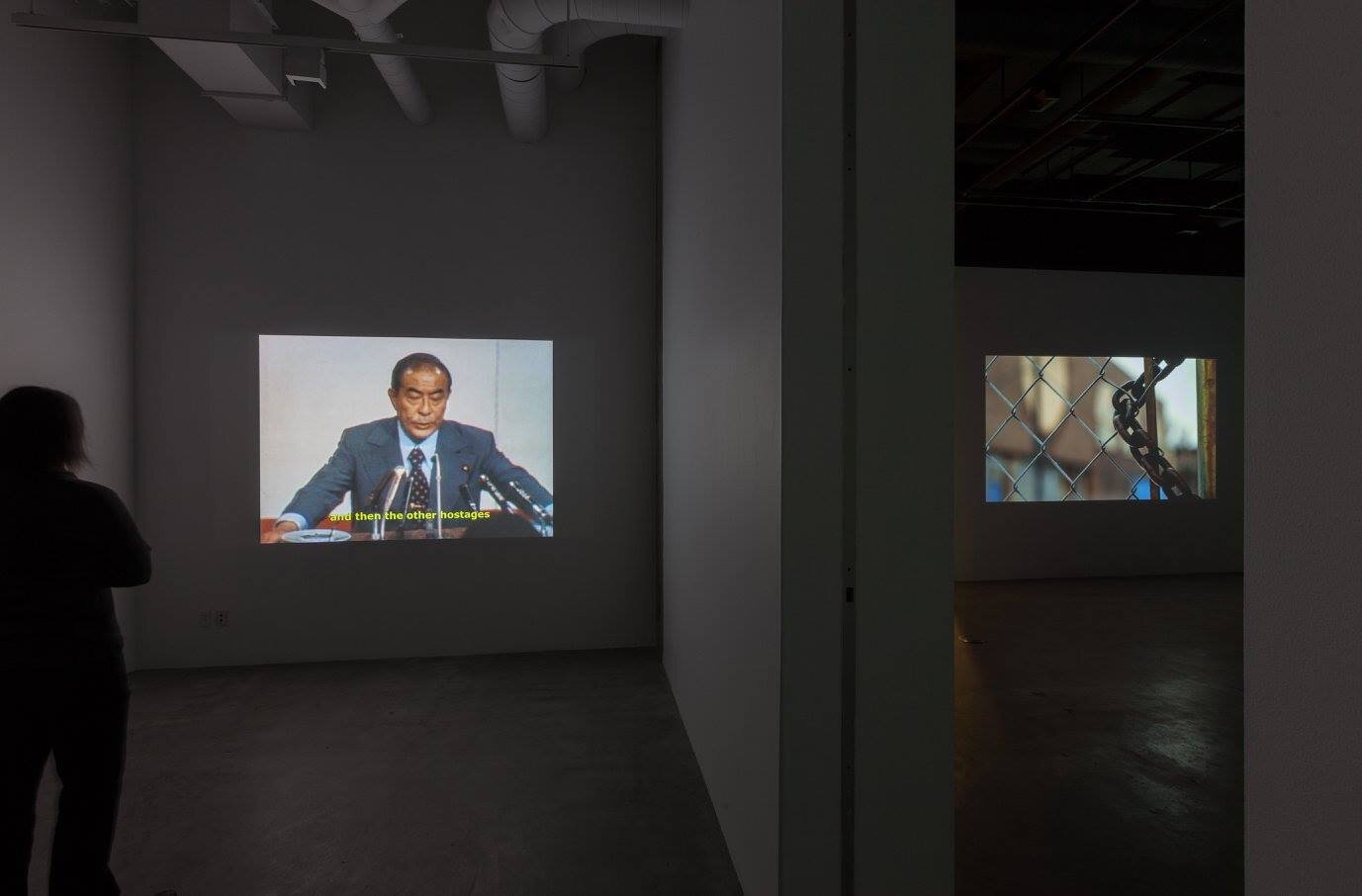United Red Army [2011]








September 1977, The Japanese man speaks in halting English; the Bangladeshi negotiator, with the clipped confidence of an army officer. A colour scheme suggests order in the exchange: green, red, and the occasional white. But underneath the schema of a dark screen—subtitle sans image—lies a waiting unravelling. The Japanese Red Army had attached to the Palestinian cause, and through that to an idea of global pan-Arabism. But the high-value hostage turned out to be an Armenian banker from California, and the Democratic Party Congressman on honeymoon negotiated a call to the White House, only to be greeted by Jimmy Carter’s answering service. The hostage terrain was not an “Islamic Republic,” as the hijackers thought, but a turbulent new country ricocheting between polarities and imploding in the process. Two years earlier, the country had gone through a sequence of military coups, decimating, in turn, the country’s founder a group of war veteran army officers, and finally, a Leftist insurgency within the army.
Instead of being the willing platform for the Japanese Red Army’s ideas of “Third World revolution,” the actual Third World hit back in unexpected ways, turning the hijackers into helpless witnesses. The lead negotiator, codename “Dankesu,” says with baffled understatement and halting English: “I understand you have some internal problems.” An eight-year-old watches the television screen with growing confusion—the screen shows an unmoving control tower for hours on end, and he wants his favourite show to start again.
United Red Army premiered at the Sharjah Biennial in 2011. Sarinah Masukor described the film’s structure, specifically the archival images, as “ever on the verge of collapsing into abstraction, their materiality performs the indeterminacy of the event they record” (West Space).
COLLECTIONS
The Kiran Nadar Museum of Art
New Delhi, India
The Tate Modern
London, UK
KEY EXHIBITIONS
Okayama, Japan,
EEE Project, Kurashiki University of Arts and Sciences, Okayama, Japan, 2019
Ramallah, Palestine
“Subcontracted Nations,” curated by Yazid Anani, A.M. Qattan Foundation, 2018
Dhaka, Bangladesh
“Chobi Mela IX,” Bangladesh Shilpakala Academy, 2017
Krakow, Poland
“Afterimages of the German Autumn,” Bunkier Sztuki Gallery, 2017
Edinburgh, UK
“Forms of the Left: Activist Art and Left-Wing Aesthetics in Postcolonial South Asia,” University of Edinburgh, 2016
Turin, Italy
“Mario Merz Prize, Finalists Show (with Naeem Mohaiemen, Wael Shawky, Glenn Ligon, Lida Abdul, Anri Sala)” Fondazione Merz, 2015
Sharjah, United Arab Emirates
“Plot for a Biennial,” Sharjah Biennial, 2011
New York, USA
“EXPO 1: New York, Speculations (The Future is…)”, MoMA PS1, 2013
“Migrating Forms,” Anthology Film Archives, 2012
“The Young Man Was (Part 1: United Red Army),” New Museum, 2011
SELECT PRESS EXCERPTS
Modern Painters,“But anyone acquainted with Mohaiemen or his work knows he is a keen but somewhat perverse polymath, whose possible subjects of analysis run the gamut from newsworthy events of historical record to the sorts of minor cultural artifacts that constitute what literary theorist Lauren Berlant has dubbed the “silly archive.” (Murataza Vali, 2012)
West Space Journal “.ever on the verge of collapsing into abstraction, their materiality performs the indeterminacy of the event they record.”(Sarinah Masukor, “Touching the Face of the World,” 2013)
Depart Magazine, Issue 10/11 “Mohaiemen is the narrator of his own story and the anthropologist circumambulating history from the disorientation of memory: his rendering of fragmentary awareness and adult commentary in a voice that is neither emotional, nor completely detached, creates a certain distanciation between viewer and the ‘young man that was.’”
2012 (Seema Nusrat Amin, “Shadow-boxing with hi(story),” 2012)
Arts Hub Australia “Such considered construction reminds more of a Dadaist collage than a documentary.” (Matt Millikan, “Are Documentaries Art?” 2012)
Bidoun “It not only epitomized one of the exhibition’s crucial and entirely unscripted themes — how to make engagements with a revolutionary past meaningful in the sudden eruption of a revolutionary present — it also doubled back on some of the biennial’s grand and problematic claims, proposing art as a subversive act, for example, by questioning art’s potential compared to that of political action or sustained activism.”(Kaelen Wilson-Goldie, 2011)
Sharjah Art Foundation “[D]ifficult to describe, not least because, as Naeem says himself, to do so and to sketch the mountain of which the film is a very small ‘tip’, takes longer than the film and inevitably undoes it as a work with real potency. The piece revisits a time when hijackers said things like “we hurt bourgeois people” or “it is duty of revolutionary soldiers” but the approach is pointed in its sophistication.” (Guy Mannes-Abbott, 2011)
Mister Motley “This precarious situation, where both men want to win but need to trust the other without knowing what is going on at the other side of the line, is elevated in tribute of something universal. It broadly refers to all the personal and political negotiation[s] that take place in our lives.” (Maaike Gouwenberg, 2011)